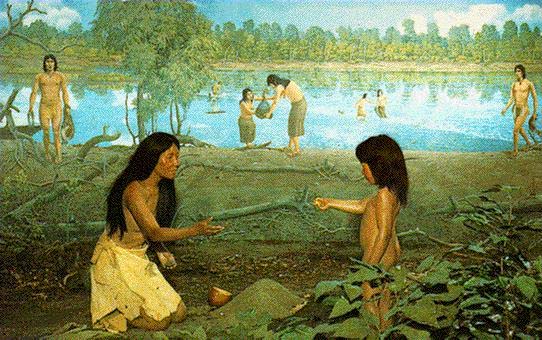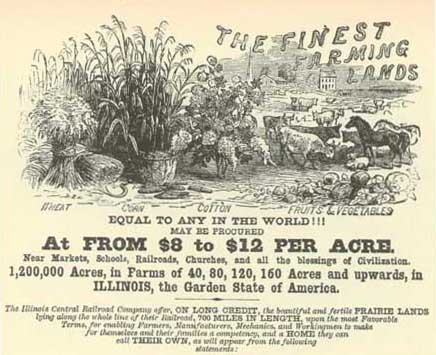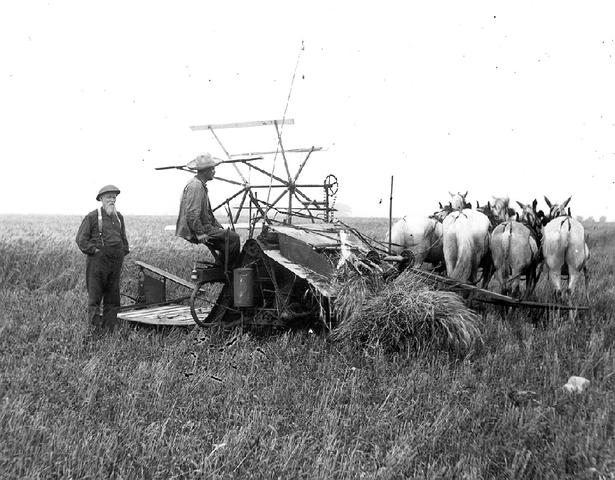
Human Settlement
Native American tribes began the history of Illinois agriculture about 7,000 years ago. They cultivated corn, squash, and other crops that we still produce today. In the nineteenth century Euro-American settlers displaced Native Americans when they immigrated to the newly annexed Illinois Territory. They started small farmsteads on southern Illinois prairies near the Wabash and Mississippi Rivers.
Illinois gained statehood in 1818. Land sales offices opened and more settlers moved to the state to create farms. Population grew rapidly as English, German, African American, and other groups started settlements and towns. These settlers had stories of hardship and success to tell about their new lives.

After thousands of farms were created, mechanization of farming began to increase. Subsistence farming gave way to commercial farming. Crop plants, and livestock breeds were improved and machines did more of the labor. From 1850 to 1900, great growth developed in farm production. The marketing of commodities became faster and easier as the roads and railroads reached many areas of the state. Chicago was growing as a center of rail and water transportation and commerce.

The twentieth century brought the continuation of technological change. Some small farms disappeared, but others are still in the hands of the descendants of the original owners. Other farms were absorbed into larger farms, suburbs, and growing cities. Farming changed continually as new machinery was invented and improved and chemical and genetic sciences developed new products. Illinois became a “breadbasket” of the nation.
Today we reap the benefits of this agricultural history. This Web site chronicles
some of the peoples and individuals who lived this history. The Museum’s
collections and research illustrate the history of agriculture in Illinois
with photographs, artifacts, and specimens.






